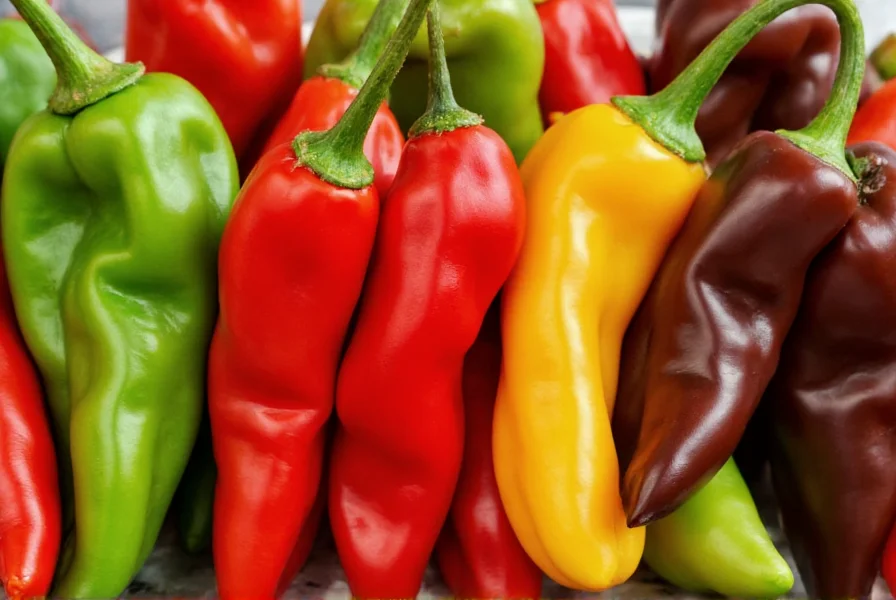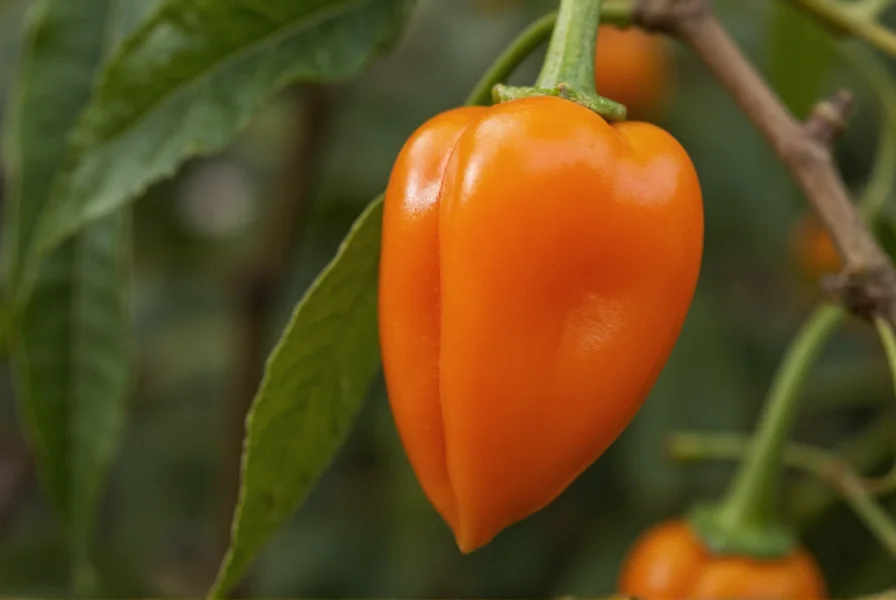The Scoville scale remains the definitive measurement for chili pepper heat, and understanding where habaneros fall on this spectrum is crucial for both culinary enthusiasts and pepper growers. As one of the most popular super-hot peppers in global cuisine, the habanero's intense heat profile demands respect and proper handling knowledge.
Understanding the Scoville Heat Unit System
Developed by pharmacist Wilbur Scoville in 1912, the Scoville Organoleptic Test originally measured capsaicin concentration through human taste panels. Today, high-performance liquid chromatography (HPLC) provides precise capsaicin measurements that are then converted to Scoville Heat Units. This scientific approach ensures accurate heat ratings across different pepper varieties.
Each Scoville unit represents the degree of dilution required before capsaicin becomes undetectable to human taste. A habanero pepper measuring 200,000 SHU would need to be diluted 200,000 times before its heat disappears completely. This explains why even small amounts of habanero can dramatically impact a dish's spiciness.
Habanero Pepper Heat Range Explained
While most references cite habaneros at 100,000-350,000 SHU, this broad range reflects several important factors:
| Factor | Effect on Heat Level |
|---|---|
| Pepper variety | Red habanero vs. chocolate habanero can differ by 50,000+ SHU |
| Growing conditions | Stress factors like drought increase capsaicin production |
| Ripeness | Orange habaneros are typically hotter than green immature ones |
| Plant genetics | Some heirloom varieties consistently produce higher heat |
Recent agricultural studies show that habanero heat levels have increased over the past two decades due to selective breeding. Modern cultivars often test at the higher end of the scale compared to historical measurements.

Comparing Habanero Heat to Other Popular Peppers
Understanding habanero's position on the Scoville scale requires context. The following comparison illustrates where habaneros stand relative to common peppers:
| Pepper Variety | Scoville Heat Units | Heat Relative to Habanero |
|---|---|---|
| Bell Pepper | 0 SHU | 0 times habanero heat |
| Jalapeño | 2,500-8,000 SHU | 12-40 times milder |
| Serrano | 10,000-23,000 SHU | 5-17 times milder |
| Habanero | 100,000-350,000 SHU | Baseline |
| Scotch Bonnet | 100,000-350,000 SHU | Similar heat profile |
| Ghost Pepper | 855,000-1,041,427 SHU | 2-8 times hotter |
Interestingly, habaneros and Scotch bonnets share nearly identical Scoville ranges, though many chefs note subtle flavor differences. The habanero's distinctive floral, citrus notes make it a favorite despite its formidable heat.
Habanero Varieties and Their Specific Heat Levels
Not all habaneros deliver the same heat experience. Different varieties exhibit distinct Scoville ratings:
- Red Habanero - 150,000-325,000 SHU (most common commercial variety)
- Orange Habanero - 100,000-200,000 SHU (slightly milder with pronounced fruitiness)
- Chocolate Habanero - 250,000-350,000 SHU (darker color correlates with higher heat)
- White Habanero - 100,000-250,000 SHU (rare variety with unique flavor profile)
- Peruvian White - 150,000-300,000 SHU (often hotter than standard orange habaneros)
Pepper growers have developed several habanero hybrids that push heat boundaries even further. The habanada, a rare mutation, offers habanero flavor without the intense heat (0-500 SHU), making it accessible to heat-sensitive consumers.
Practical Implications of Habanero Heat Levels
Understanding habanero's Scoville rating isn't just academic—it has real culinary consequences. A single habanero contains enough capsaicin to significantly heat an entire pot of soup. Professional chefs recommend these handling practices:
- Always wear gloves when handling habaneros
- Remove seeds and white membranes (placenta) where most capsaicin concentrates
- Start with 1/4 to 1/2 pepper for a standard recipe serving 4-6 people
- Balance heat with acidic ingredients like lime juice or vinegar
- Have dairy products available to counteract accidental overexposure
The heat from habaneros develops more slowly than milder peppers, often taking 30-60 seconds to fully register. This delayed reaction frequently leads to accidental overconsumption as people mistakenly think they can tolerate more.
Safety Considerations for Extreme Heat Peppers
While habaneros fall below the danger threshold of peppers like the Carolina Reaper, their heat still requires respect. Medical professionals report increasing cases of:
- Skin irritation from improper handling
- Respiratory discomfort when cutting dried habaneros
- Gastrointestinal distress from overconsumption
- Eye exposure incidents causing temporary vision impairment
Researchers at the University of California's Agriculture Department recommend that home cooks treat habaneros with the same caution as handling chemicals. Proper ventilation, protective eyewear for sensitive individuals, and immediate washing after handling can prevent most issues.
Conclusion
The habanero's position at 100,000-350,000 Scoville Heat Units makes it a versatile yet challenging ingredient that bridges the gap between moderately hot and super-hot peppers. Understanding its variable heat profile allows cooks to harness its distinctive flavor while managing its intense capsaicin content. Whether you're a culinary professional or home cook, respecting the habanero's heat potential ensures enjoyable experiences with this beloved pepper.
Frequently Asked Questions
How does habanero heat compare to jalapeño?
Habaneros are significantly hotter than jalapeños, measuring 100,000-350,000 Scoville Heat Units compared to jalapeños' 2,500-8,000 SHU. This means habaneros are typically 12-40 times hotter than jalapeños. One habanero pepper contains as much capsaicin as approximately 20-40 jalapeños.
Are all habanero peppers equally hot?
No, habanero heat varies considerably based on variety, growing conditions, and ripeness. Red habaneros typically range from 150,000-325,000 SHU, while chocolate habaneros can reach 250,000-350,000 SHU. Environmental stressors like drought can increase heat levels by up to 30% in the same variety.
What makes habanero peppers so hot?
Habaneros contain high concentrations of capsaicinoids, particularly capsaicin and dihydrocapsaicin, which stimulate pain receptors. The white membranes and seeds contain the highest concentration of these compounds. The pepper's heat is an evolutionary adaptation to deter mammals from eating them while allowing birds (which don't feel the burn) to disperse seeds.
How can I reduce habanero heat in cooking?
To reduce habanero heat, remove all seeds and white membranes (where 80% of capsaicin concentrates), soak cut peppers in vinegar or lemon juice for 10-15 minutes, or cook with dairy products like yogurt or cream. Heat diminishes slightly with prolonged cooking, but capsaicin is remarkably stable. Start with small amounts and taste carefully before adding more.
Is the habanero the hottest pepper in the world?
No, habaneros are not the hottest peppers. While extremely hot at 100,000-350,000 SHU, they fall far below current record-holders like the Carolina Reaper (1,400,000-2,200,000 SHU) and Pepper X (3,180,000 SHU). Habaneros rank around #10-15 on the hottest edible peppers list, making them accessible to many heat enthusiasts while still delivering significant spice.











 浙公网安备
33010002000092号
浙公网安备
33010002000092号 浙B2-20120091-4
浙B2-20120091-4